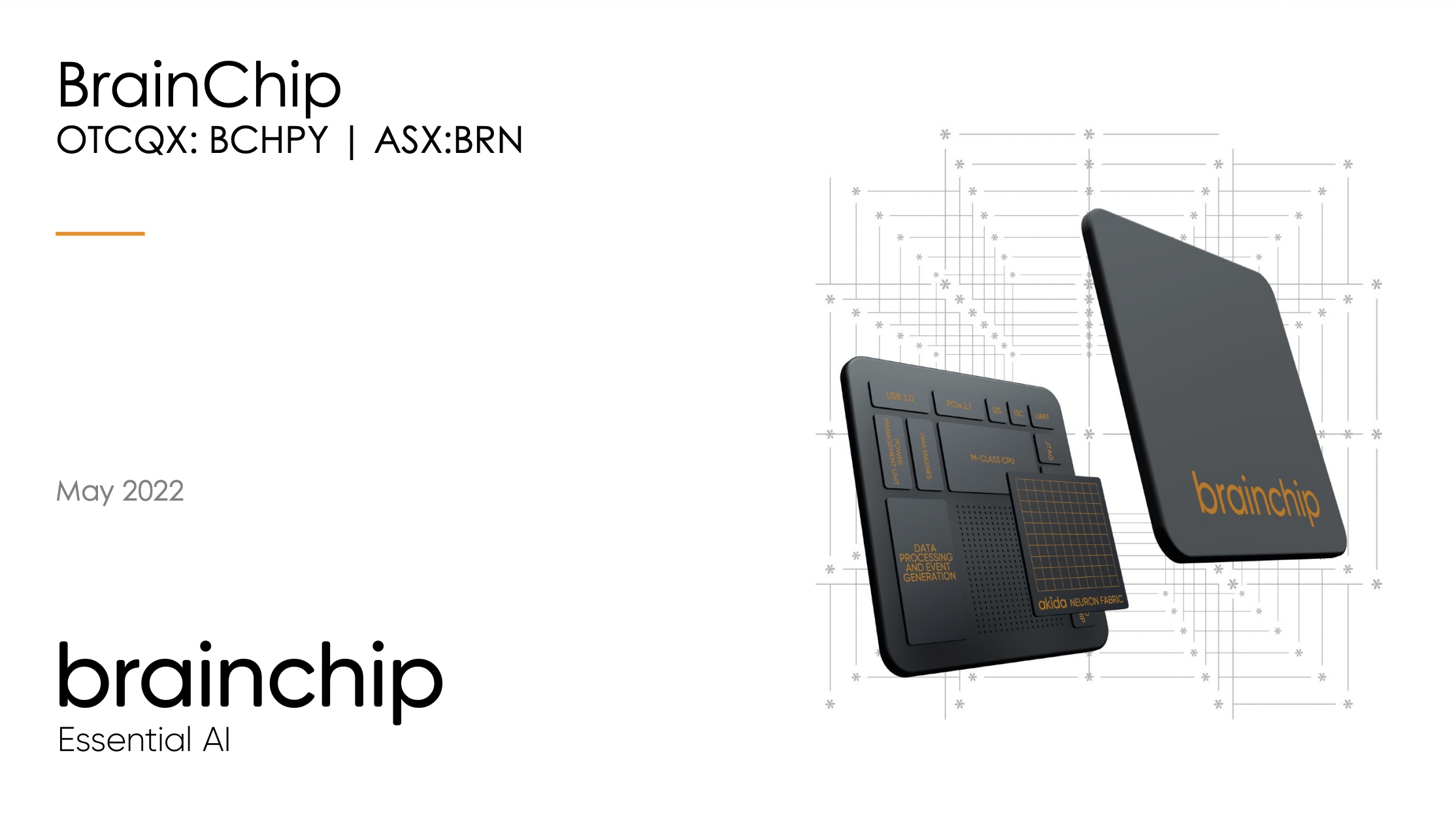Received an email today regarding the monthly newsletter.
Has anyone managed to get hold of what Sean said at the Oppenheimer event?
It may have been a "closed shop"
View attachment 42879
Per email today.......Message to Oppenheimer clients (plus much more in newsletter)
Note section under marquee brands.
Essential Investment.
Edge devices with AI are predicted to be a $70B market by 2025. BrainChip is working to be the design standard in the future of edge compute.
Overview
Stock
News
Events
ASX Filings
Governance
FAQ
Alerts
Podcasts
BrainChip is the worldwide leader in edge AI on-chip processing and learning. The company’s first-to-market neuromorphic processor, AkidaTM, mimics the human brain to analyze only essential sensor inputs at the point of acquisition, processing data with unparalleled efficiency, precision, and economy of energy. Keeping machine learning local to the chip, independent of the cloud, also dramatically reduces latency while improving privacy and data security.
BrainChip enables effective edge compute to be universally deployable across real-world applications such as connected cars, consumer electronics, and industrial IoT.
BrainChip is proving that on-chip AI, close to the sensor, is the future for its customers’ products and the planet.
 Download
Download
Why Invest
Demand for AI-enabled Edge and Internet of things (IoT) devices is forecasted to grow at double-digit annual growth rates for the foreseeable future.
Due to bandwidth, data security, latency, and power constraints on edge devices, product demand will shift from cloud-dependent AI devices to solutions where data is captured on the device.
Massive power consumption and emissions resulting from AI data centers will shift AI processing from traditional cloud data centers to processing on the device. Akida’s cloud independence capabilities uniquely address these AI-related infrastructure and sustainability issues.
The Akida architecture is scalable and flexible and addresses the requirements for the vast and growing number of IoT and edge devices in consumer and industrial applications.
MetaTF software makes adoption easy, automating conversion from traditional networks into immediately usable and efficient “spiking” networks.
Marquee brands include Mercedes, Valeo, Vorago, and NASA, and commercial IP licenses with Renesas and MegaChips. Commercial availability of semiconductor chips, IP, tools, and boards.
The revenue model includes IP licensing, product sales & support, and high-margin royalty streams.
Electronic Shareholder Communications

github.com





